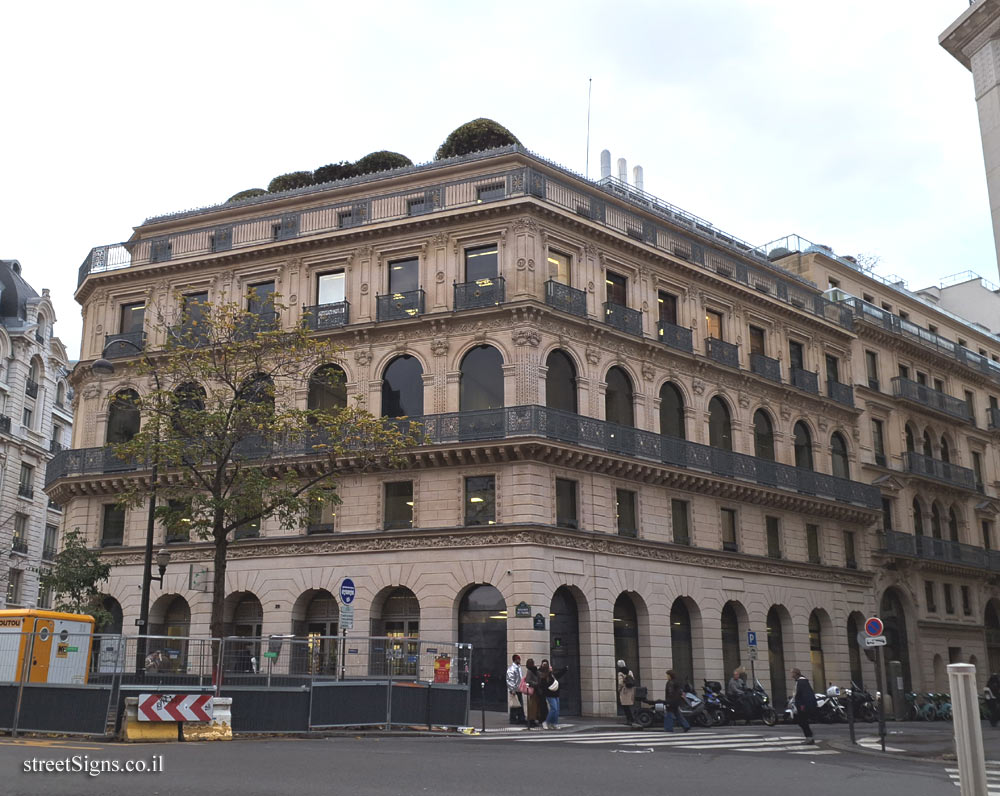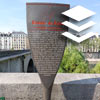One of the series of signs describing historical places in Paris. The signs were placed starting in 1992 and are also called sucettes Starck (Starck’s Lollipops) after Philippe Starck who designed them.
The sign describes the place where the restaurant La Maison Dorée (The Golden House) was located, and where the newspaper office of Alexandre Dumas (The Musketeer) was located.
The building was photographed on the same day
 Click for a larger image
Click for a larger image Zooming in on a photo taken that day, you can see the balconies that gave the place its name as well as the symbol of the BNP Paribas bank
 Click for a larger image
Click for a larger image  Click for a larger image
Click for a larger image The illustration in the center of the sign is shown here at magnification
 Click for a larger image
Click for a larger image This sign is different from the other signs in the series: it is not on a pillar, and at the top does not appear the symbol of the municipality of Paris and the inscription Histoire de Paris, but the name of the bank BNP Paribas, which currently owns the building.
Translation of the text on the sign:
BNP PARIBAS
[BNP Paribas logo]
La Maison Dorée Located on the site of the Choiseul-Stainville hotel where Madame Tallien resided, the Café Hardi gave way in 1839 to the Maison Dorée, so called because of the balconies which still adorn its facade. All of Paris from politics, literature and gallantry flocked there. Balzac, Hugo, Nerval, then Flaubert and the Goncourt brothers were regulars. In 1853, Alexandre Dumas set up the editorial office of his newspaper “Le Mousquetaire” on the ground floor.
[Alexander Dumas caricature]
In 1886, the Maison Dorée hosted the last exhibition of the Impressionists. In 1976 the BNP undertook the restoration of the facade. The building now houses, among other things, the market activities of BNP Paribas.

 Click for a larger image
Click for a larger image  Click for a larger image
Click for a larger image  Click for a larger image
Click for a larger image  Click for a larger image
Click for a larger image  Click for all signs belonging to The History of Paris (Starck's Lollipops)
Click for all signs belonging to The History of Paris (Starck's Lollipops)
 94 Meter |
94 Meter |  186 Meter |
186 Meter |  269 Meter |
269 Meter |  293 Meter |
293 Meter |  324 Meter
324 Meter